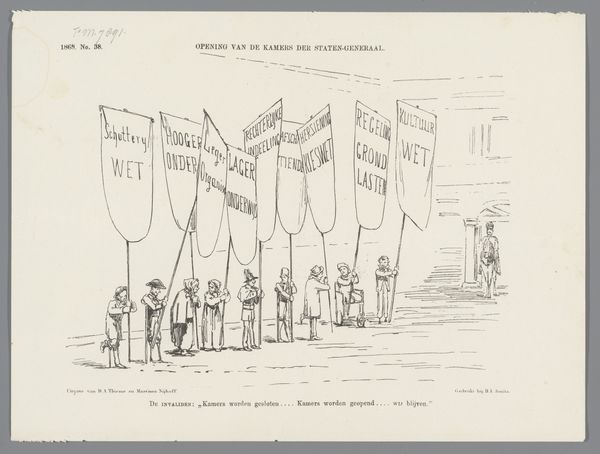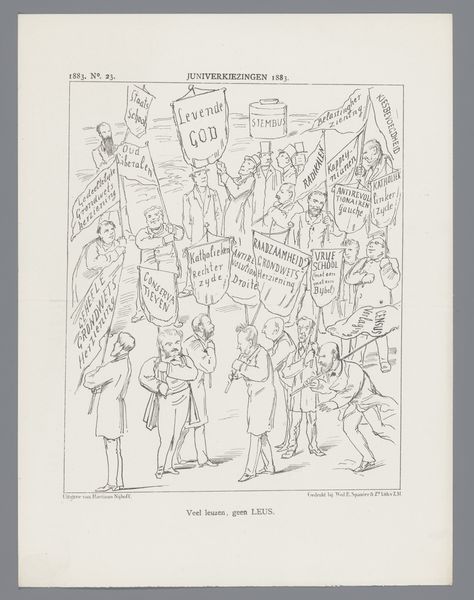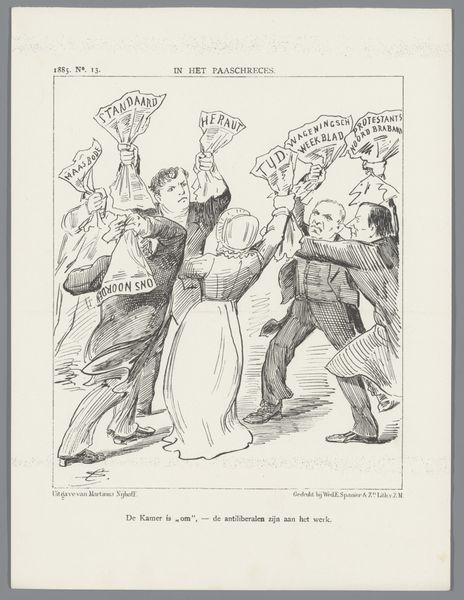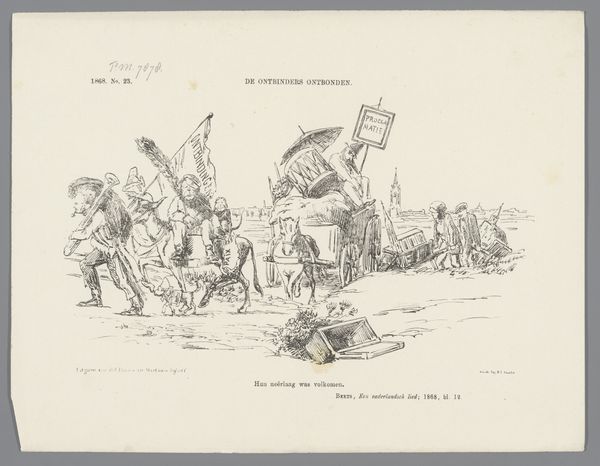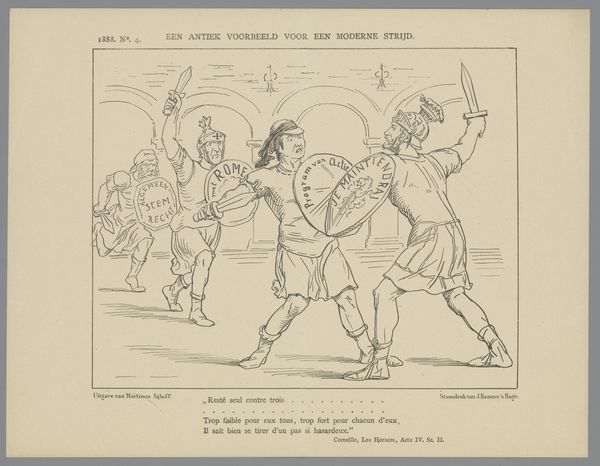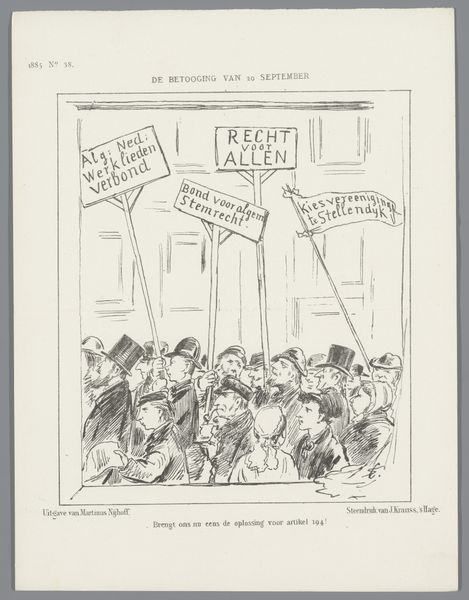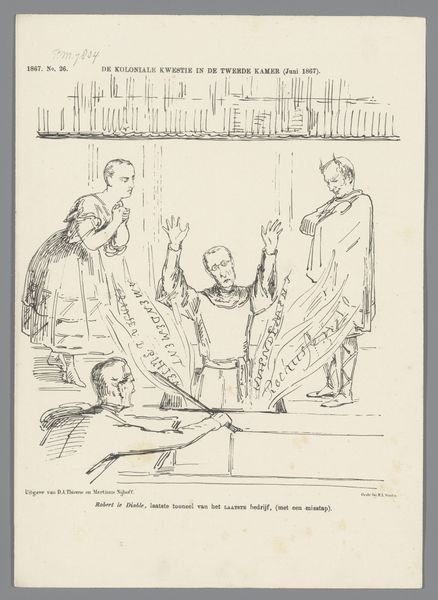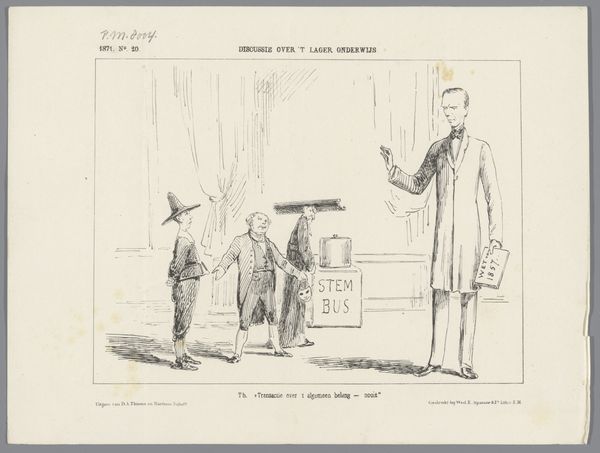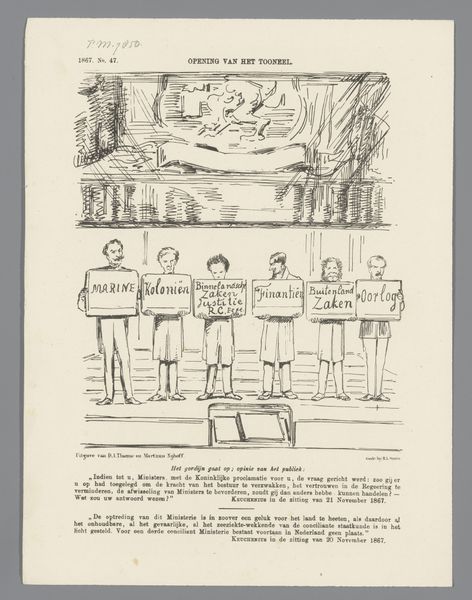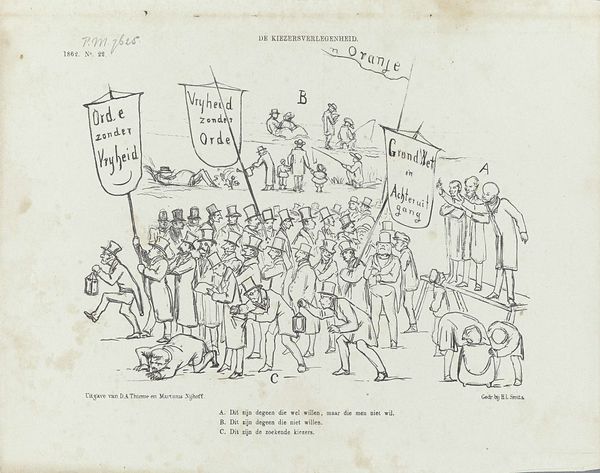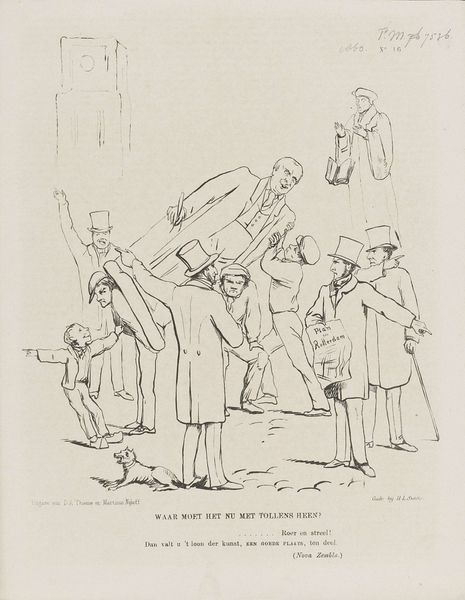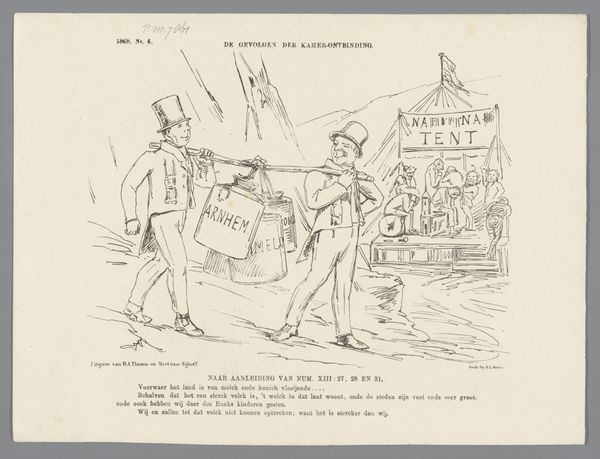
Spotprent op het onaangeroerd laten van de koloniale kwestie in de troonrede, 1867 1867
0:00
0:00
drawing, graphic-art, print
#
drawing
#
graphic-art
#
comic strip sketch
#
16_19th-century
#
quirky sketch
# print
#
caricature
#
sketch book
#
personal sketchbook
#
idea generation sketch
#
sketchwork
#
thin linework
#
sketchbook drawing
#
storyboard and sketchbook work
#
sketchbook art
#
realism
Dimensions: height 215 mm, width 275 mm
Copyright: Rijks Museum: Open Domain
Editor: This is a drawing from 1867 by Johan Michael Schmidt Crans. It's titled "Spotprent op het onaangeroerd laten van de koloniale kwestie in de troonrede, 1867," or "Cartoon about leaving the colonial issue untouched in the Speech from the Throne, 1867." It's a pretty busy scene with several figures and lots of text crammed into the composition. I am curious, what compositional choices stand out to you most? Curator: Well, consider first the stark linearity. The figures, delineated with sharp, unwavering lines, appear almost as though constructed from geometric forms. Observe how this meticulousness emphasizes the artificiality of the scene, reinforcing the cartoonish or satirical nature of the subject matter. This precision seems deliberate, inviting us to scrutinize each element carefully. What do you make of the groupings and positioning of the figures themselves? Editor: It seems like some figures are burdened by different blocks or scrolls filled with text. There’s a sense of imbalance. One figure is on all fours! How might we interpret the symbolic nature of such physical representations? Curator: Exactly. Note how the artist employs this strategy to visually articulate the weight, both literally and figuratively, of various societal concerns on particular figures. The composition directs our gaze through a deliberate choreography, drawing attention to areas of heightened complexity versus zones of relative emptiness. Editor: It feels as though this sketch aims to expose specific elements of 19th-century Dutch politics. Curator: Indeed. And it does so through the skillful arrangement of form and line, inviting critical engagement. Now, reflecting on our discussion, can you see how the artwork’s impact derives less from historical narrative and more from the intricate interplay of visual components? Editor: I see that the deliberate composition amplifies its satirical message, turning potentially obscure historical context into a vivid visual statement. Thanks for breaking it down in a formal way.
Comments
No comments
Be the first to comment and join the conversation on the ultimate creative platform.
